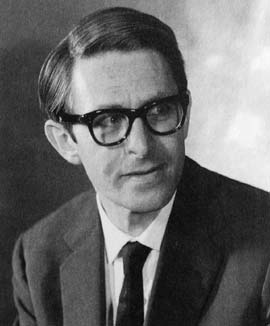
Klaus Friedrich Roth
 المؤلف:
Biography in Encyclopaedia Britannica
المؤلف:
Biography in Encyclopaedia Britannica
 المصدر:
Biography in Encyclopaedia Britannica
المصدر:
Biography in Encyclopaedia Britannica
 الجزء والصفحة:
...
الجزء والصفحة:
...
 24-2-2018
24-2-2018
 760
760
Born: 29 October 1925 in Breslau, Germany (now Wrocław, Poland)

Klaus Roth came to England when he was young and attended St Paul's School in London from 1939 to 1943. He then went to Peterhouse, Cambridge where he was awarded his BA in 1945.
After graduating, Roth was appointed as an assistant master at the internationally famous Gordonstoun School, which lies 10 km north of Elgin in Scotland. The school had been founded in 1934 by the German educator Kurt Hahn as a boys' school that would emphasise the development of character in addition to academic excellence. The boys were expected to live in quite hard conditions without any of the luxuries of life.
Roth returned to London in 1946 to undertake research at University College. He was awarded his master's degree in 1948 and appointed an assistant lecturer there in that year. He was awarded his doctorate two years later, becoming a lecturer, then a reader in 1956, and then a professor in 1961.
In fact Roth made a remarkable mathematical breakthrough while still a lecturer at University College. He solved the major open problem of approximating algebraic numbers by rationals in 1955. It was for this work that Roth was awarded a Fields Medal in 1958.
For any irrational number r it is easy to see that there are infinitely many rational numbers a/b with
| a/b - r | < 1/b2
(the convergents for the continued fraction of r all satisfy this). For a given r let (r) be the upper bound the exponents e such that there are infinitely many rational numbers a/b with
| a/b - r | < 1/be.
The above shows that (r) ≥ 2 for all r.
Liouville showed in 1844 that if r is an algebraic number of degree n then (r) ≤ n.
The open question was then to find where in the range
2 ≤ (r) ≤ n the value of (r) was for an algebraic number of degree n.
Thue showed that (r) ≤ n/2 + 1 in 1908 and Siegel improved this in 1921 to (r) ≤ 2√n.
Roth solved the problem completely in 1955 by showing that for any algebraic number r, (r) = 2.
Davenport presented Roth with the Fields Medal at the International Congress in Edinburgh in 1958. Speaking of Roth's solution to this problem of approximating algebraic numbers Davenport said [2]:-
The achievement is one that speaks for itself: it closes a chapter, and a new chapter is now opened. Roth's theorem settles a question which is both of a fundamental nature and of extreme difficulty. It will stand as a landmark in mathematics for as long as mathematics is cultivated.
Davenport, in his Fields Medal presentation, mentions another problem solved by Roth. This was Roth's proof in 1952 of a conjecture made in 1935 by Erdős and Turán. The conjecture concerned a sequence
n1, n2, n3, ...
of natural numbers satisfying
np + nq ≠ 2nr
unless p = q = r. If N(x) denotes the number of terms of the sequence less than x, Roth proved the conjecture that N(x)/x → 0 as x → ∞.
Davenport ends his address [2] by saying:-
The Duchess, in Alice in Wonderland, said that there is a moral in everything if only you can find it. It is not difficult to find the moral in Dr Roth's work. It is that the great unsolved problems of mathematics may still yield to direct attack however difficult and forbidding they appear to be, and however much effort has already been spent on them.
Roth moved to the chair of Pure Mathematics in Imperial College, London in 1966 and held this chair until 1988. In that year he went to University College, London as a visiting professor, a position he held until 1996 when he returned to the north of Scotland, not far from where he taught at Gordonstoun School before he began his research career.
The Fields Medal was not the only honour to be bestowed on Roth. He received many other honours including fellowship of the Royal Society of London in 1960 and of the Royal Society of Edinburgh in 1993. He received the De Morgan Medal of the London Mathematical Society in 1983 and the Sylvester Medal of the Royal Society in 1991.
- Biography in Encyclopaedia Britannica.
http://www.britannica.com/eb/article-9099233/Klaus-Friedrich-Roth
 الاكثر قراءة في 1925to1929
الاكثر قراءة في 1925to1929
 اخر الاخبار
اخر الاخبار
اخبار العتبة العباسية المقدسة


